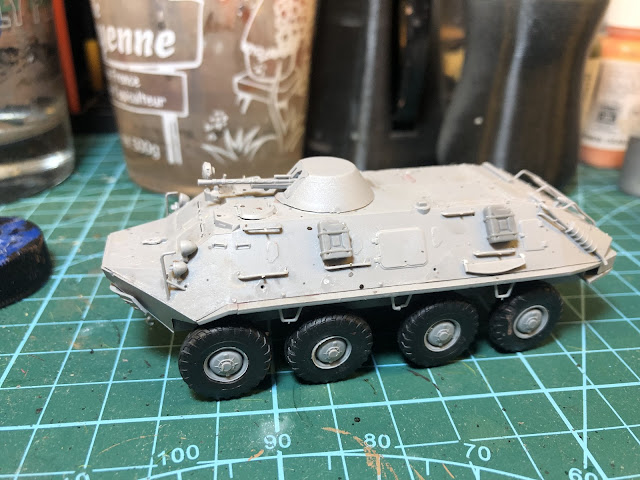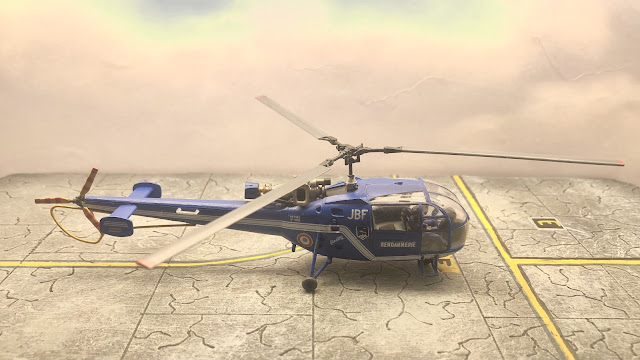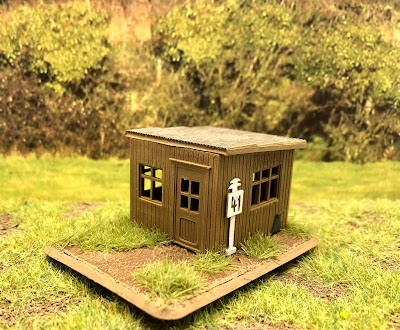Tuesday, December 31, 2024
Thursday, December 26, 2024
100 ersatz panzer Abteilung Normandy 1944
100. Panzer Ausbildungs und Ersatz Abteilung
The unit had been raised in April 1941 in Germany posted to Versailles France in April 1942. The unit was renamed in April 43 100. Panzer Ausbildungs und Ersatz Abteilung. The unit moved to the Cotentin peninsula in May 1944, the HQ element was in first in Apperville 7klm northwest of Carentan. On May 13th the unit was placed under 91st LLD and the HQ moved to Francquetot chateau.Organisation
 |
| La Fiere bridge counterattack |
Stabskp. with
- Nachr.Zug
- Werkst.Zug
- le.Pz.Zug (5 Pz.Kpfw. Renault R35)
- I.(Pz.) Zug (5 Pz.Kpfw. Renault R35)
- II. SchZug [Schtz. = Schützen = infantry]
- III.(Schtz.) Zug
2.Kp. with
- Grp.Fhr. (2 Pz.Kpfw. III 5 cm)
- I.(Pz.) Zug (1 Pz.Kpfw. Somua, 4 Pz.Kpfw. Renault R35)
- II.(Pz.) Zug (1 Pz.Kpfw. Renault B 2, 4 Pz.Kpfw. Hotchkiss 39)
- III.(Pz.) Zug (1 Pz.Kpfw. III 5 cm, 4 Pz.Kpfw. Hotchkiss H39)
3.Kp. with
- I.(Pz.) Zug (5 Pz.Kpfw. Renault R35)
- II.(Schtz.) Zug
- III.(Schtz.) Zug
Weapons listing:
1 Kwk 7,5 cm (f) (1 Pz.Kpfw. Renault B2)
3 Kwk 5 cm (d) (3 Pz.Kpfw. III)
2 Kwk 4,7 cm (f) (1 Pz.Kpfw. Somua, 1 Pz.Kpfw. Renault B2)
8 Kwk 3,7 cm lang (f) (8 Pz.Kpfw. Hotchkiss 39)
19 Kwk 3,7 cm kurz (f) (19 Pz.Kpfw. Renault R35)
The 4 infantry platoons were armed with just 3 light machine guns each.
The manpower strength of the unit was 664 men.
 |
| Vehicles in the Baupte yard |
RF Organisation
Cheers
Tuesday, December 24, 2024
Terrain Tuesday - WW2 bits
Terrain Tuesday
A bit of terrain completed before Christmas. A few roadside shrines, the cross is metal and possibly Ral Partha the Madonna is plastic. The plinths are bases glued together.
 |
| Roadside Madonna |
 |
| Roadside cross |
Cheers
Saturday, December 21, 2024
Merry Christmas to you all for 2024
A big Merry Christmas to everyone, we are home in France this year for a cool winter, I do hope Santa is good to you! I will be painting g for the analogue painting challenge as usual!
Cheers
Matt
Friday, December 20, 2024
101st Airborne Normandy WIP Wednesday part one
101st Airborne Normandy
Thursday, December 19, 2024
90th Infantry Division in Normandy part 1
90th Infantry Division in Normandy and Pays de Loire
Historical Organisation
357th Infantry Regiment Col Barth
358th Infantry Regiment
359th Infantry Regiment
Headquarters and Headquarters Battery, 90th Infantry Division Artillery343rd Field Artillery Battalion (105 mm)
344th Field Artillery Battalion (105 mm)
345th Field Artillery Battalion (155 mm)
915th Field Artillery Battalion (105 mm)
315th Engineer Combat Battalion
315th Medical Battalion
90th Cavalry Reconnaissance Troop (Mechanized)
Headquarters, Special Troops, 90th Infantry DivisionHeadquarters Company, 90th Infantry Division
790th Ordnance Light Maintenance Company
90th Quartermaster Company
90th Signal Company
Military Police Platoon
Band
Wednesday, December 18, 2024
Fallschirm Aufklärungs Abteilung 12
Fallschirm Aufklärungs Abteilung 12
This parachute reconnaissance battalion was created at the begining of January 1944. An independant unit attached to II. Fallschirmjager - Korps, it was led by Hauptmann Gotsche. I have quite a few spare fallschirmjager, so it will be an easy build. A lot of accounts mention no or not many Armoured cars were available, I plan to at least have 1 Italian Armoured car (1 destroyed at St Lo). And possibly one other in the 1st company, the remainder of the battalion in VW kubelwagens. The support coy, will have heavy cars. Flak 20mm and a pak 40.
1 Kp- (Lt Von Konitz)
2 Kp- (Lt Runge):
3 Kp- (Lt Tereux)
4 Kp- (Haupt. Raabe): Heavy coy
5 Kp- (Lt LLig):
Tuesday, December 10, 2024
341 Sturmgeschütz Brigade
341. Sturmgeschütz Brigade
This unit was formed as 341. StuG.Abt. in December 1943. It was reorganized as 341. StuG.Brig. in February 1944. In May 1944 the unit was located near Narbonne in southern France and it was still forming. On 1 June it had 19 StuG and 9 StuH which can be compared to an authorized strength of 45 assault guns. It remained in southern France during June and recieved further assault guns. On 1 July it was at full strength, having 33 StuG and 12 StuH.
Commanders
Movements
24.7.44Bv.TO with AOK 7.
Br.B.nr.1615/44 geh.
Daily report :
I) Troop transports:
a) Movements:
Sturmgeschützbrigade 341 leaves the Toulouse region in 5 convoys towards Pz.Gr.West.
1st convoy leaves on 25.7.44.
28.7.44
Bv.TO with AOK 7.
Br.B.nr.1643/44 geh.
Daily report :
I) Troop transports:
a) Movements:
Sturmgeschützbrigade 341:
1st convoy to Saint-Etienne-de-Montluc (northwest of Nantes, movement at 22:00.)
3rd and 4th convoy on 26.7 at the entrance to Nantes.
29.7.44
Bv.TO with AOK 7.
Br.B.nr.1648/44 geh.
Daily report :
I) Troop transports:
a) Movements:
Sturmgeschützbrigade 341:
1st and 2nd convoy to Rennes, movement planned at nightfall.
3rd convoy to Redon, movement in the evening.
4th convoy to Beslé* (north-east of Redon), movement in the evening.
* Beslé station is a railway station on the Rennes to Redon line, located in the municipality of Guémené-Penfao.
30.7.44
Bv.TO with AOK 7.
Br.B.nr.1655/44 geh.
Daily report :
I) Troop transports:
a) Movements:
Sturmgeschützbrigade 341:
1st convoy and 2nd convoy unloaded early on 30.7 at La Boussac and Pleine-Fougères (east of Dol de Bretagne).
3rd and 4th convoy stopped at Rennes; continuation planned for 30.7 after dark.
5th convoy at the entrance to Nantes.
31.7.44
Bv.TO with AOK 7.
Br.B.nr.1662/44 geh.
Daily report :
I) Troop transports:
a) Movements:
Sturmgeschützbrigade 341:
3rd convoy unloaded early on 30.7 at Combourg (south of Dol).
4th convoy unloaded on 30.7 in the evening at Rennes.
5th convoy on 31.7 at Redon, continuation planned at nightfall towards Combourg.
I & II battery Commitment to stem the American breakout at Avaranches
The unit was first comitted to combat in the Brécey - Avranches area on 31 July in Kampfgruppe Bacherer along with the iii Abteilung 897 regiment, 77th infantry division and two battalions II Fallschirmjäger-Ersatz-und-Ausbildung Regiment 2 FJD to retake Avaranches. Heavy fighting occurred whilst trying to retake Pontaubault bridge. It seems that 1st Batterie was the first unit to see action. During its first days of combat, this battery lost twelve of its fourteen assault guns. |
| StuG III destroyed by AT fire, note the modified Shurzen and debris guard on top of the Mantlet. |
1.8.44
Bv.TO with AOK 7.
Br.B.nr.1672/44 geh.
Daily report :
I) Troop transports:
a) Movements:
Sturmgeschützbrigade 341:
5th convoy unloaded on 1.8 at Combourg.
It was reported on 1 August that the two committed batteries were almost all destroyed, while the third battery was still close to Rennes at Combourg. It was reported that five railway cars with elements of the brigade were still in Redon on 2 August.
2.8.44
Bv.TO with AOK 7.
Br.B.nr.1681/44 geh.
Daily report :
I) Troop transports:
a) Movements:
Sturmgeschützbrigade 341:
(StuG of the 5th road convoy) 2.8 to Redon, movement at nightfall towards Mayenne
According to Tornau/Kurowski the brigade quickly received new assault guns from Paris via Tours. How many the brigade received is not clear, but it was reported that on 3 August four assault guns were in the area of Nantes and it is possible that these were intended for the 341. StuG.Brig in the Mayenne department area.
II battery Fighting Dinan - St. Malo area.
 |
| Destroyed by company L by bazooka 121st Infantry Division on the 8th August, St Malo, |
 |
| St Malo destroyed by C Company 644th tank destroyer battalion 12th August |
III battery Fighting Mayenne
On the night 2nd of August the third battery moved from Rennes to Laval by train, disembarked on the western side of the Mayenne river line to defend the breakout of Pattons 3rd army east towards Le Mans. The company moved from Laval then north to Ville Mayenne on the western side of the river (as the Laval bridges were already demolished) to cross then defend the bridge in Ville Mayenne that the was open for the retreating supply units from Rennes and the movement towards the buildup area for operation Lűttich.
On the 3rd of August the unit joined Kampgruppe Coretti and seen action against the US 90th infantry division on the 5th of August, losing one Sturmgeschutz III to US tanks in Ville Mayenne. On the 6th and 7th of August the remaining three vehicles counterattacked against the bridgehead at Mayenne with elements of the 708 Infantry Division, 9th Panzer Panzer IV, Panzer Lehr reconnaissance Abteilung and elements of the 1st Sicherung Division, losing another vehicle to anti tank fire between Aaron and Mayenne. After a fighting withdrawal to the North east towards Alençon.
Withdrawal North East
The brigade reported 20 assault guns on 2 August (Mayenne and St Malo), with most of the unit lost in the fighting in Brittany, five days later on the 9th it reported twelve assault guns remaining.
On 1 October the brigade had 544 men which was only four less than its establishment called for. During September casualties amounted to only 18 men, while 133 men arrived as replacements. Five men had left the brigade for other reasons than being casualties. Accordingly the brigade must have had 434 men on 1 September.
No deliveries of assault guns to the brigade has been found among the records of the Inspector-General of Panzer Troops, except 17 StuG III and 10 StuH III sent to OB West on 31 July for further distribution.These arrived 9 August and may have ended up with 341. StuG.Brig north of Chartres. The assault gun deliveries indicated by Tornau/Kurowski may also have been taken from various training facilities in France (there was e.g. an assault gun school at Tours). On 1 October the brigade had 10 combat ready assault guns and 13 in short term repair.
Building for Rapid Fire
Monday, December 2, 2024
Aérospatiale Alouette III. Ia French Gendarmerie
A very old kit from the stash is finally completed, I elected to actually paint this one as a French gendarme helicopter, with a Force on force scenario in mind. I have another two Alouette’s which will join my French airforce and a mercenary unit in the future.
A simple build, but the instructions leave a little to be desired, I added Elhiem civilian crew models and added a weight in the mid section so I can add a flying stand if required. The decals were a little old so I clear varnished them, only a few splintered, but not terrible. Overall quite happy with my build results.
Cheers
Matt
Sunday, December 1, 2024
NATO Ground Crew & Pilots
Another small project completed. A mix of Airfix and Esci Miniatures. The pilots are a mix of RAF, USAF and Luftwaffe. I could not resist painting some of the ground crews in aircraft carrier jackets.
Cheers
Matt
Saturday, November 30, 2024
Panzerspähwagen AMR-35 VMF701 (f) 8cm Schwerer Granatwefer 34 auf
Completed two panzerkampfwagen AMR35 VMF701 (f) 81mm mortars for my 91st Luftlande division for Normandy. The either served in the 91st or the 11th Panzer, Wikipedia article
A mix of Battlefeild/Blitz and AB crew. I did add numbers which the originals did not have according to the images in the salvage dump in Manche, Normandy. The location of the dump points towards the 91st Division..
 |
Cheers
Matt
Wednesday, November 27, 2024
WIP Wednesday - Wehrmacht, Warpac kit, NATO Ground Crew
As I continue on clearing out my project drawers I decided to paint a number of things this week. First up a 81mm mortar carrier on a H39 chassis, thought to be have used by 91st Luftlande Division in Normandy. The crew are a mix of AB and battlefield, It has been gloss varnished so only decals, weathering and flock to go.
A IBM models BTR 60, an ACE BMP 150 and a resin BMP 150 for my Egyptians. The ICM kit is nice, but parts are very fine. The ACE is a SOB, the tracks particularly are painful. The resin kit is a Armo kit, not sure how long I have had this but it must be 20 years at least.
 |
| ACE kit, the tracks are a absolute nightmare… metal handles added with wire |
 |
| ICM model a nice kit but lots of fine parts |
Finally Esci and Airfix NATO Ground crew. They will be perfect for airfield based scenarios. As they are soft plastic a little cleaning up with a sharp scalpel is in order. I elected to base them on coins then build up the base with plaster, I possibly should have just cut them off at the feet and pinned them.
Cheers
Matt
Tuesday, November 26, 2024
Terrain Tuesday - ww2 bits
A fettlers railway shed, entrenchment, hay stack and some French fuel drums for a supply dump.
Sunday, November 24, 2024
Russian tank and SP crew
I have been completing pieces from my project drawers again, first up some ww2 Russian Tank and SP crew, a mix of Orion and Plastic Soldier Company. The Orion figures are soft plastic so the clean up is a little difficult, the psc are nice but oversize IMHO.
 |
| PSC, Orion, PSC |
 |
| Orion, PSC, PSC |
 |
| PSC, PSC,PSC |
 |
| PSC, PSC, PSC |
Cheers
Matt
Thursday, November 21, 2024
Wip Wednesday
On the build table are a few items first up a 1/72 Heller areospatiale Alouette III. I am undecided if it will join my French Armee or airforce elements.
Cheers
Matt



































